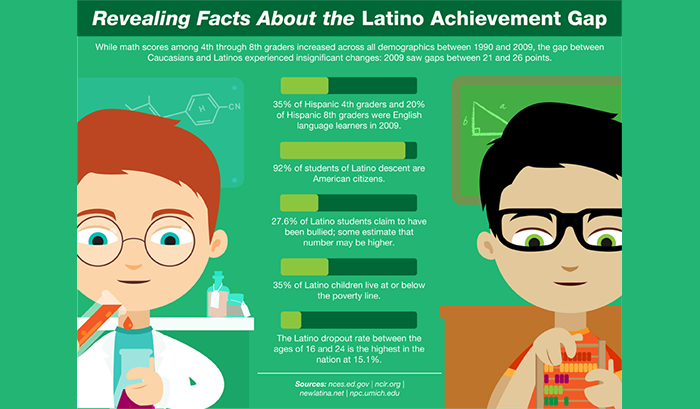List California’s biggest problems and water immediately comes up, followed by public employee pension obligations, voter distrust for government and childhood poverty, which runs higher here than almost anywhere else.
The biggest problem this state faces as it looks to the future may be the fate of the children belonging to its single largest ethnic group. Latinos may have surpassed majority Anglos in population this year, but they have been the plurality in public schools for more than a decade.
They also have the highest high school dropout rate. The educational achievement gap between them and whites and Asian Americans has not narrowed in recent years.
As the school year began this fall, it was useful to consider the biggest reason for this. It comes down to a single item: Language proficiency.
Solving this problem, closing the gap, will be the most important task for governments, state and local, over the next 10 years. Without a large, well-educated work force, California will see more of its jobs migrate elsewhere when companies seek qualified workers. Even the high cost of housing in most of the state takes a back seat to the education gap when companies look to their future hires.
The gap is most visible when looking at the percentage of college graduates among various ethnic groups. Only 11 percent of Latinos aged 24 to 29 had college degrees in 2013, reported Investors Business Daily the other day. By contrast, 34 percent of whites in the same age bracket were degreed. More distressing, there has been no discernible increase in the number of Hispanics getting college degrees over the last 20 years. African Americans and other minority groups, meanwhile, have made progress.
The reason for the lag can’t be anything but language. Fully 42 percent of Latino children entering kindergarten are in the bottom quarter of pupils in reading readiness, while just 18 percent of Anglo youngsters fall into that category. By third grade, one-third of Hispanic schoolchildren are proficient in English to 64 percent of Anglos.
Starting Too Late
Those numbers suggest a preschool education gap of huge proportions, one that doesn’t ease much as the kids get older. It’s most likely a big reason Latino rates of high school dropouts approach 50 percent, while the overall rate has dropped into the 20 percent range.
One reason for the gaps might be cultural attitudes toward unwed motherhood, where daughters of young, single mothers often follow in parental footsteps. This can lead to dropouts, with 25 percent of Latinas not completing high school, a rate exceeded only by young Latino males.
The consequence is lower achievement. And when large numbers of high schoolers fail to achieve, employers begin to think about other places where recruiting choices look more promising.
California faces a major problem: The state must educate Latinos better, despite the language barriers often caused by recent immigration.
Of course, there still is the question of whether test scores reflect an actual situation. Some school officials maintain that English-language testing of students not proficient in the dominant language puts them at a disadvantage from the start.
This may be true, but if those kids are still testing lower than others by the end of high school – or simply leave out of frustration or for other reasons – it doesn’t matter. They won’t be the highly-trained work force needed by today’s companies and the start-ups of the future.
Some Latino students say there are stereotyped. They don’t even get challenging homework, regardless of their language skills. One Latino student in the agricultural Central Valley town of Delano reports that he ‘s “almost never” assigned a book to read – in any language. “Teachers just think we’re not able to do any hard academic work,” he said. “I’ve had to read on my own because I want to test high enough to go to college.”
Failure here is not just of students and their parents, but of educators who underestimate them and their desire to learn. Changing those attitudes among educators is the necessary first step toward setting California up for its most promising potential future.
Mr. Elias may be contacted at tdelias@aol.com. His book, “The Burzynski Breakthrough, The Most Promising Cancer Treatment and the Government’s Campaign to Squelch It,” is now available in a soft cover fourth edition. For more Elias columns, visit www.californiafocus.net

